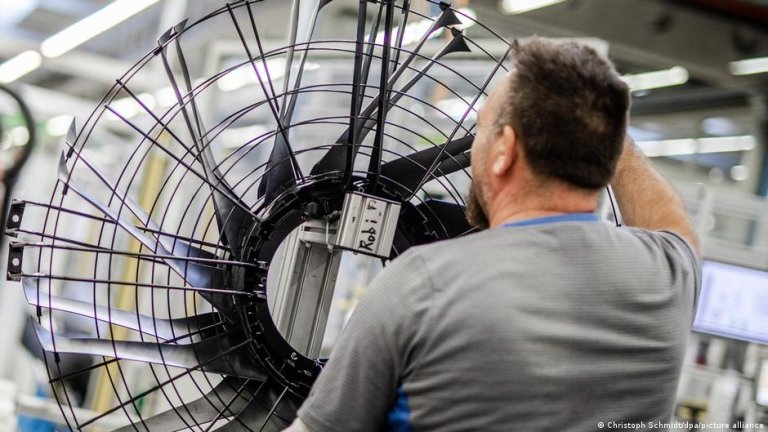

EU’s New ‘Tinder for Jobs’ Platform: Attracting Global Manpower to Address Critical Labor Shortages
- trienkhaiweb
- 24 January, 2024
- 0 Comments
The European Union is facing a significant manpower shortage, and the European Commission has a plan. A new platform, dubbed “Tinder for Jobs” by EU officials, will act as a matchmaker, connecting skilled migrants with desperately needed job openings across the EU. This initiative aims to directly address the skills gap and labor shortages plaguing the bloc’s economy.
What is the EU Talent Pool?
This voluntary platform for EU member states will rely on advanced algorithms to match qualified migrants with suitable employment opportunities based on their specific skills and experience. The aim is to streamline the immigration process and bolster Europe’s labor market with much-needed manpower. Think of it as facilitating legal pathways for skilled workers seeking opportunities within the EU.
EU home affairs chief Ylva Johansson emphasizes that the “EU Talent Pool” won’t override individual member states’ control of immigration quotas. Instead, it’s a tool to make it easier for countries to find the specific manpower they need to fill critical vacancies across diverse sectors.

Why Europe Needs More Manpower
Europe’s aging population and the mass retirement of the baby boomer generation pose a stark demographic challenge. The European Commission warns of a looming worker shortage in key sectors like healthcare, construction, and technology. The EU projects that by the end of the century, Europe’s workforce could shrink dramatically, leaving a gaping hole of seven million workers.
“We need more labor migration.” says Johansson, highlighting that the domestic workforce alone cannot sustain Europe’s economic needs.
The Dual Purpose: Manpower and Migration
The “EU Talent Pool” isn’t just about filling jobs; it could also deter irregular migration. By offering legal, transparent pathways for skilled migrants, the EU hopes individuals will be less inclined to risk dangerous journeys controlled by smugglers.

Global Competition for Talent
In the quest for skilled workers, Europe isn’t alone. The EU recognizes a “global race for talent” where countries like the US, Canada, and Australia often have an edge with simpler immigration processes. This new platform is an essential part of Europe’s strategy to stay competitive on the world stage, especially in industries driving the green and digital transitions.
Beyond Manpower: Tackling Brain Drain and Racism
To maximize the potential of this talent pool, the EU urges member states to streamline their processes for recognizing foreign qualifications. Reducing bureaucratic hurdles is critical to prevent “brain waste” – skilled immigrants unable to work in their field. The EU also stresses the need to actively combat racism, which can deter skilled professionals from choosing to work in Europe.
Important Considerations
While the EU Talent Pool initiative shows promise, it’s essential to remember that not all EU states may agree with labor migration as a solution. Some governments are exploring alternative strategies such as pro-natalist policies that aim to boost birth rates. Additionally, it remains to be seen how quickly the platform can be implemented and how effective it will be at matching the right workers with the right jobs.
Related articles
Employee Empowerment with Quinn Vietnam Manpower
In today’s dynamic business landscape, organizations are increasingly recognizing the importance of employee empowerment as a key driver of success. Quinn Vietnam Manpower, a leading provider of manpower solutions in Vietnam, understands that empowered employees are more engaged, productive, and committed to organizational goals. This article delves into the concept of employee empowerment, exploring its…
Quinn Vietnam Manpower’s 5 Steps to Successful Coaching in 2025
In today’s dynamic business environment, maximizing your manpower’s potential is crucial for success. Effective coaching programs are key to unlocking this potential, fostering employee growth, and driving organizational performance. Quinn Vietnam Manpower, a leading provider of manpower solutions, presents a comprehensive guide to successful coaching in 2025. Whether you’re leading coaching sessions yourself or partnering…
Functional Skills: A Guide for Quinn Vietnam Manpower’s Workforce in 2025
In today’s competitive job market, possessing strong functional skills is more critical than ever. For Quinn Vietnam Manpower, equipping our manpower resources with these essential skills is key to their success and the success of our partner businesses. This comprehensive guide explores the importance of functional skills, particularly in Math and English, and how Quinn…
Level Up Your Workforce: Gamification Strategies for Quinn Vietnam Manpower
In the competitive landscape of Vietnam’s manpower industry, attracting, engaging, and retaining top talent is more critical than ever. Quinn Vietnam Manpower recognizes the power of innovative solutions, and gamification is emerging as a game-changer in the realm of human resources. By integrating game mechanics and elements into various HR processes, Quinn Vietnam Manpower can…
3 Communication Skills Every Manager Needs to Thrive
In today’s rapidly evolving business landscape, effective communication skills are more critical than ever for managers. Whether you’re a seasoned leader or newly promoted, honing your communication abilities can significantly impact your team’s performance, morale, and overall success. This article delves into three essential communication skills every manager needs to master in 2025 and highlights…
Harnessing the Power of Insights with Quinn Vietnam Manpower
In the dynamic landscape of 2025, where businesses face unprecedented challenges and opportunities, the ability to gain profound insights is more critical than ever. For project management (PM) in Vietnam, this rings especially true. Quinn Vietnam Manpower, a leading provider of manpower solutions, recognizes the crucial role of insights in driving project effectiveness and organizational…







